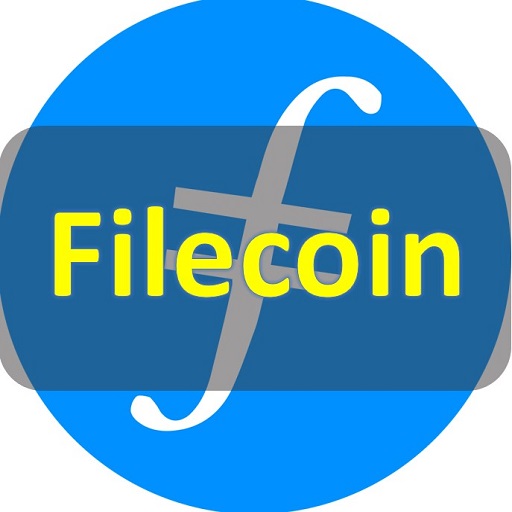Filecoin is a decentralized, blockchain-based storage network designed to facilitate the secure and efficient storage and retrieval of data. It was developed by Protocol Labs and launched in 2017. Filecoin aims to create a marketplace for storage providers and users, where individuals and organizations can rent out their unused hard drive space and earn Filecoin (FIL) tokens in exchange.
The primary goal of Filecoin is to address the challenges of data storage in a decentralized manner. Traditional centralized storage systems often suffer from issues such as high costs, data loss, and limited accessibility. Filecoin aims to overcome these problems by leveraging blockchain technology and a decentralized network of storage nodes.
In the Filecoin network, users can store their data by paying FIL tokens to storage providers. The storage providers, known as “miners,” allocate their available storage space to store the data and provide proof of storage to ensure the data’s integrity. They are incentivized to participate by earning FIL tokens in exchange for their services.
Filecoin uses a combination of cryptographic protocols, including the InterPlanetary File System (IPFS) and the Proof-of-Spacetime (PoSt) consensus mechanism, to ensure data reliability, redundancy, and security. The network’s decentralized nature makes it resistant to censorship and single points of failure, making it an attractive option for storing and accessing data in a distributed manner.
By enabling users to rent out their excess storage capacity and creating a decentralized marketplace for storage services, Filecoin aims to create a more efficient and cost-effective storage solution compared to traditional centralized alternatives. It also provides an opportunity for individuals and organizations to monetize their idle storage resources.
Who is the creator of file coin?
Filecoin was created by Protocol Labs, a research and development company focused on developing decentralized technologies. Protocol Labs is known for its contributions to various projects and protocols, including IPFS (InterPlanetary File System), libp2p, and the Filecoin Network.
The founder of Protocol Labs and one of the key figures behind Filecoin is Juan Benet. Juan Benet is a computer scientist and entrepreneur who has made significant contributions to the field of distributed systems. He developed IPFS as a peer-to-peer distributed file system to address some of the limitations of traditional centralized storage systems. IPFS serves as the underlying protocol for Filecoin.
Juan Benet and his team at Protocol Labs have been instrumental in the development and promotion of Filecoin, working to create a decentralized storage network that aims to revolutionize the way data is stored and accessed on the internet.
How to use the Filecoin system
To use the Filecoin network, you need to follow these general steps:
Get a Filecoin Wallet
Start by setting up a Filecoin wallet. The wallet will generate a unique address that you can use to send and receive Filecoin tokens (FIL). There are various wallet options available, including official Filecoin wallets or compatible wallets from trusted providers. Choose a wallet that suits your preferences and follow the instructions to set it up.
Obtain Filecoin Tokens (FIL)
Filecoin operates on its native cryptocurrency called FIL. To use the network, you need to acquire FIL tokens. You can obtain FIL through various means, including purchasing them on cryptocurrency exchanges that support Filecoin or participating in Filecoin token sales. Make sure to use reputable exchanges and follow proper security practices while handling cryptocurrencies.
Select a Storage Provider
As a Filecoin user, you can choose from a range of storage providers who offer their storage space on the network. Evaluate the available options based on factors such as reputation, pricing, storage capacity, and geographical location. Each provider might have different terms and conditions, so consider those before making a decision.
Store Data
Once you have FIL tokens and selected a storage provider, you can proceed to store your data on the Filecoin network. Most storage providers offer user-friendly interfaces or APIs to interact with their services. You will typically need to specify the data you want to store, the duration of storage, and make the required payment in FIL tokens.
Retrieval and Access
When you need to retrieve your stored data, you can use the retrieval mechanisms provided by the storage provider. This usually involves initiating a retrieval request and paying the required FIL tokens. The data will be fetched from the network and made available for you to download or access.
Remember to keep your FIL tokens and wallet secure, as they represent your ownership and access to the Filecoin network. Regularly update your wallet software and follow best practices for storing cryptocurrencies to ensure the safety of your funds.
It’s worth noting that the specific steps and user experience might vary depending on the storage provider and the tools you choose to interact with the Filecoin network. Be sure to refer to the official documentation and guides provided by Filecoin and its ecosystem to get detailed instructions for using the system effectively.
Features of FileCoin cryptocurrency
Filecoin (FIL) cryptocurrency, the native token of the Filecoin network, possesses several notable features:
Incentivization
Filecoin provides a built-in incentive mechanism for participants in the network. Storage providers (miners) are rewarded with FIL tokens for offering their storage capacity and fulfilling storage and retrieval requests. This incentivizes miners to contribute their resources to the network and maintain its functionality.
Decentralized Storage Market
Filecoin operates as a decentralized marketplace for storage services. Users can select storage providers based on their preferences, such as pricing, reputation, and location. The marketplace fosters competition and offers users a choice of providers, enabling a more efficient and diverse storage ecosystem.
Secure and Reliable Storage
Filecoin utilizes cryptographic protocols, such as the InterPlanetary File System (IPFS) and Proof-of-Spacetime (PoSt), to ensure the security and reliability of stored data. The use of decentralized storage across multiple nodes enhances data redundancy and reduces the risk of data loss or manipulation.
Flexibility and Scalability
Filecoin is designed to be highly scalable, allowing the network to accommodate a large volume of storage requests and handle growing amounts of data. The decentralized nature of Filecoin enables the network to scale as more storage providers join and contribute their resources.
Pay-as-You-Go Model
Filecoin operates on a pay-as-you-go model, where users pay for storage and retrieval services in FIL tokens based on their actual usage. This model provides flexibility and cost-effectiveness, as users only pay for the storage and retrieval services they require without any upfront commitments.
Open and Interoperable
Filecoin is built on open-source protocols and encourages interoperability with other decentralized systems. This openness enables integration with various applications and platforms, facilitating the development of a broader ecosystem of decentralized storage solutions.
Community Governance
Filecoin has a governance system that allows FIL token holders to participate in decision-making processes and propose changes to the network. This community-driven governance ensures that the network evolves with the consensus of its stakeholders and promotes decentralization in decision-making.
These features contribute to Filecoin’s vision of creating a decentralized, secure, and efficient storage network that offers an alternative to traditional centralized storage solutions.
filecoin extraction process
The process of extracting Filecoin (FIL) involves mining, which is the term used to describe the computational work performed by storage providers to contribute to the network and earn FIL tokens as rewards. Here are the general steps involved in the Filecoin extraction process:
Set Up Mining Hardware
To participate in Filecoin mining, you need to set up mining hardware. Filecoin uses a proof-of-spacetime consensus mechanism, which requires miners to dedicate storage space to the network. You would need a computer system with sufficient storage capacity, high-speed internet connectivity, and compatible mining software.
Join a Mining Pool (Optional)
Mining can be done individually or as part of a mining pool. Mining pools are collaborative groups where miners combine their resources to increase their chances of earning rewards. By joining a mining pool, you can contribute your storage space to the collective effort and receive a share of the rewards based on your contribution.
Install and Configure Mining Software
Install the appropriate mining software that is compatible with Filecoin. The official Filecoin documentation provides resources and guidelines for setting up the mining software. Follow the instructions to configure the software, including connecting it to the Filecoin network, setting up your mining parameters, and linking it to your mining address or wallet.
Start Mining
Once your hardware and software are set up, you can initiate the mining process. The mining software will perform various computations and storage-related tasks to contribute to the network’s operation. These tasks may include storing and retrieving data, verifying storage proofs, and participating in consensus protocols.
Earn FIL Rewards
As you actively contribute to the Filecoin network by providing storage and performing mining activities, you become eligible to earn FIL token rewards. The rewards are distributed based on the amount and quality of storage provided, as well as the successful completion of storage and retrieval requests. The mining software will track your contributions and periodically distribute the earned FIL tokens to your mining address.
Manage and Exchange FIL
Once you have earned FIL tokens, you can manage them within your mining address or transfer them to a separate Filecoin wallet for better security. From there, you can decide to hold the FIL tokens, trade them on supported cryptocurrency exchanges, or engage in other activities within the Filecoin ecosystem.
It’s important to note that mining Filecoin requires significant computational resources and storage capacity. It’s advisable to carefully consider the hardware requirements, energy costs, and potential returns before engaging in mining activities. Additionally, staying updated with the latest information and guidelines from the Filecoin community and official sources will help ensure a smooth and successful mining experience.
Disadvantages of filecoin
While Filecoin offers several advantages as a decentralized storage network, it also has some potential disadvantages:
Complexity and Technical Expertise
Participating in the Filecoin network as a storage provider or user requires technical knowledge and expertise. Setting up mining hardware, configuring software, and understanding the intricacies of the system can be complex, especially for non-technical users. This complexity may limit the accessibility of Filecoin to a wider audience.
High Hardware and Operational Costs
Mining Filecoin requires significant computational resources and storage capacity. The cost of acquiring and maintaining the necessary hardware can be substantial, particularly for small-scale miners. Additionally, the operational costs, including electricity consumption and internet bandwidth, can be considerable.
Price Volatility
Like other cryptocurrencies, the value of Filecoin (FIL) is subject to price volatility. The price of FIL tokens can fluctuate significantly, which introduces uncertainty for storage providers and users. The potential for price volatility may affect the profitability of mining and the stability of storage costs.
Potential Centralization of Storage Providers
Although Filecoin aims to create a decentralized storage network, there is a possibility of centralization in practice. Large-scale storage providers with substantial resources may dominate the network, leading to a concentration of power and potential issues such as limited competition and decreased decentralization.
Limited Adoption and Network Effects
Filecoin’s success depends on widespread adoption and network effects. The network requires a sufficient number of storage providers and users to achieve its full potential. If adoption remains limited, it may impact the liquidity of the marketplace, the availability of storage options, and the overall utility of the network.
Regulatory and Legal Considerations
As with any cryptocurrency, Filecoin may face regulatory challenges and legal uncertainties in various jurisdictions. Government regulations, restrictions, or bans on cryptocurrencies can impact the usability and acceptance of FIL tokens, potentially affecting the network’s growth and viability.
It’s important to note that these disadvantages are not unique to Filecoin and are common challenges faced by many blockchain-based systems. As the technology continues to evolve and the Filecoin ecosystem matures, efforts are being made to address these concerns and improve the network’s functionality and accessibility.







